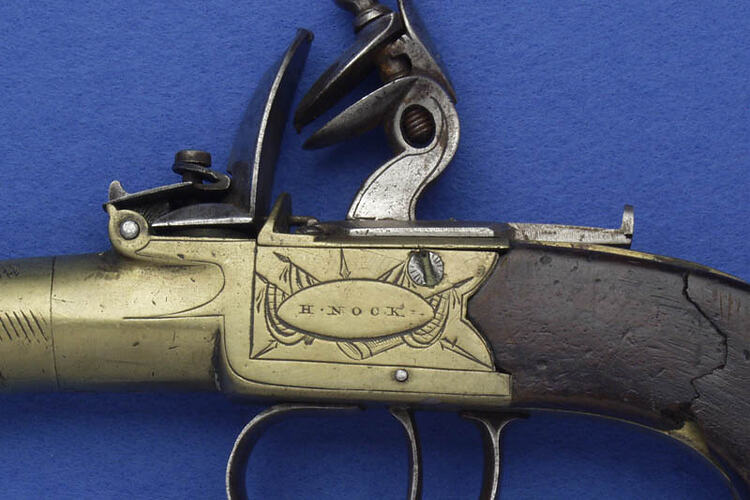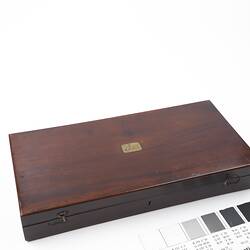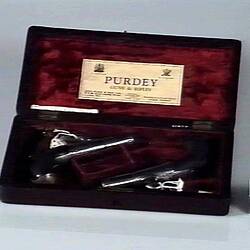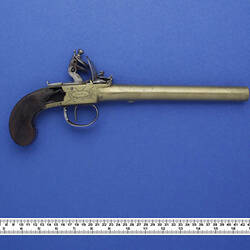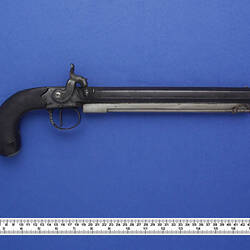Henry Nock opened business in London in 1772, appearing in the rate books for 1772 as a gunlock smith at Mount Pleasant, London.
In April 1775 he formed a partnership with fellow gunmakers, William Jover and John Green, to sell firearms made under English Patent No.1095 from 83 Long Acre. By 1779 he had moved to the Whitechapel district and appears at Castle Alley in Whitechapel the following year, 1780. That same year he designed and produced 7-barrelled guns for the Board of Ordnance and followed it up with a screwless lock (1786), a wall piece (1788), the Duke of Richmond's musket (1792), Royal House Artillery pistol (1793) and a cavalry carbine and pistol in 1796.
From 1784 until his death in 1804 he was based at 10 Ludgate Street, with factories at Moses and Aaron Alley, 27 Goulston Street and 9 Castle Alley, Whitechapel. Across the same period he had a shooting ground at Clowters Gardens behind St. George's Church, on Blackfriar's Road. During these years he took out his own patent, English Patent No. 1598 in 1787 for an improved breech design.
Shortly after moving into the Whitechapel district, Nock made a set of gauges for the Gunmakers Company Proof House in 1781, but shortly afterwards severed his ties with the Company by purchasing his freedom in 1784. This move reflected the sentiments of many gunmakers who worked outside the Company's control over London's inner city area. Blackmore (1986) describes the situation: 'To the west extending along Fleet Street to the Strand and Charing Cross, and north to Long Acre and Holburn, were new generations of master gunmakers who had served their time elsewhere and had no traditions of service with the City Companies.'
From 1771 until 1804 Nock was a contractor to the Board of Ordnance and from 1777 until a year before his death, he was a contractor to the East India Company for the supply of arms.
In July 1778 the Gunmakers' Company, after having argued that the loss of income was in part due to the lack of a Livery, petitioned the Lord Mayor and the Aldermen and were successful. As a result, the Gunmaker's Company took its place in the social life of the City and played its part in its business and politics, including the election of Aldermen and the Lord Mayor. Obviously attracted by the newly found status in being attached to the Company, Nock took Livery in 1795 and rose through the ranks to become Assistant in 1792 to finally Master in 1802.
He died in 1804 and was succeeded by his foreman and son-in-law, James Wilkinson (d.1849).
References:
Blackmore, H. (1986). A Dictionary of London Gunmakers, 1350-1850, Phaidon, Christie's, Oxford.
Heer, E. (1978).Der Neue Stockel, vol.2, Journal-Verlag, Schwend BmbH.
More Information
-
Keywords
-
Localities
-
Authors
-
Article types
